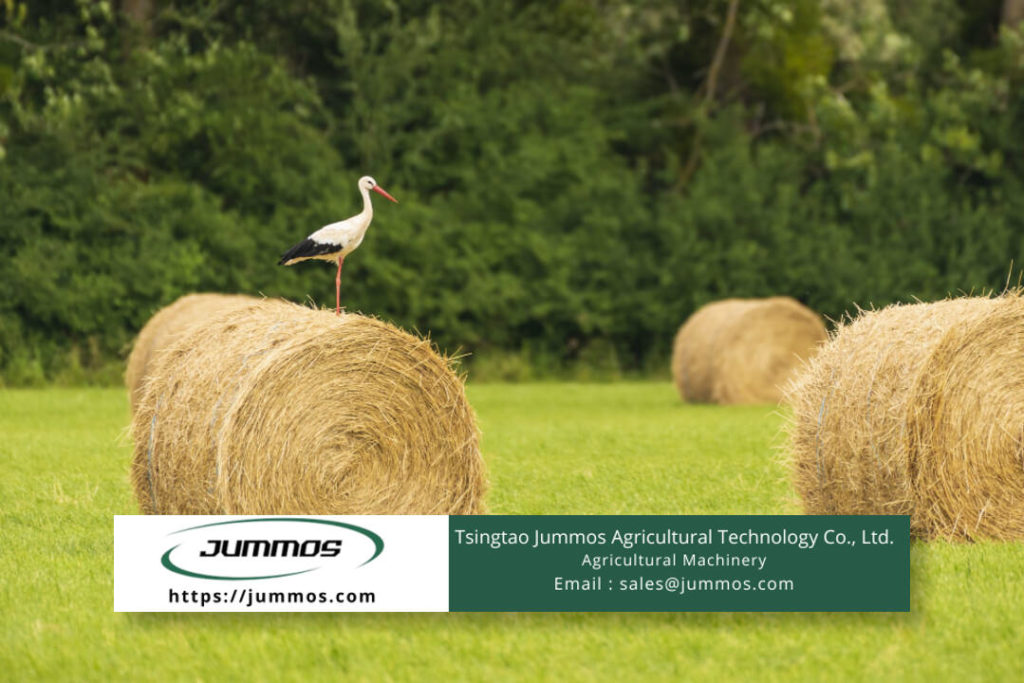Farmers often harvest large amounts of forage. After feeding the cattle with fresh forage, there was still plenty of it left. They must store what is left wisely if they do not want to lose fresh forage in difficult times such as prolonged droughts and extreme cold. Wrapping hay bales for storage is a modern solution that they can use.
Storing fermented forages wrapped in special plastic which is airtight and anti-bacterial is fairly fast compared to the previous method which used silos. Silos took up to days in the making process. However, there are several things that farmers must pay attention to in wrapping hay bales for storage. Some of these may have been done for bale storage by using bale wrapping machines and different bale thicknesses.
Contents
Watch the Water Level
Bale moisture content is the first order that you should pay attention to. Appropriate humidity conditions are the key to successful hay harvesting after balling and long storage. The overall moisture level of the hay while in the baler is at least 50 to 60 percent.
Farmers often complain about the decay that occurs after wrapping hay bales for storage. They thought the humidity was just right. However, rot usually occurs in haylage with humidity levels of less than 40 percent or more than 60 percent.
Humidity levels below 40 percent have the potential to bring mold, while humidity levels above 60 percent have the potential to create butyric acid fermentation which can cause decay.
Does the Bale Size Matter?
Bale size when wrapping hay bales for storage is very important to note. Bale weight will depend on forage type, moisture level, and bale density. Tight, dense, and nonperishable bales can be created by the slow-motion speed during the baling process with the machine.
Plastic thread as a wrapper is the best material besides processed sisal thread. Processed sisal thread has oils that can interfere with the plastic coating during the storage process.
After wrapping hay bales for storage, we will usually get a bale weighing 900 to 1,300 pounds and approximately 4 feet wide and up to 5 feet in diameter. This is the ideal bale size. However, there are also vales up to 2000 pounds where less wrapping film is required but more difficult to handle.
It is better to make bales of reasonable weight so that distribution is also easy.
How the Popular In-line Machine Works
Wrapping hay bales for storage must go through the stages of wrapping with a machine. The in-line wrapping machine is the most commonly used on many farms. This machine is less likely to damage the stretch wrap after wrapping. About half the stretch wrap is used for each bale as the machine wraps the bales individually.
This in-line wrapper costs a little more than other machines at the beginning of use. However, the savings in the use of plastic and labor were able to return the amount of money spent to buy this machine.
The way this machine works in wrapping hay bales for storage is quite simple. You just need to place the round bales on the machine from end to end. Then the bales will be wrapped with stretch wrap continuously. The wrapped bales move on rollers which gradually lower them to the ground as the machine moves forward.
The Right Time for Wrapping Hay Bale for Storage
The quicker you wrap the better for the bales themselves. The time for wrapping the hay bale is at least 12 hours after the balling process. If the time is too long after the balling process, then your bales will be difficult to wrap because they change their shape.
Proper Type of Wrapper for Storage
You can use individual bale wrapping or inline bale wrapping. If an experienced worker uses individual bale wrapping, then he can wrap 25 bales or more per hour. Meanwhile, he can wrap up to 50 bales more if he uses a line-wrapping machine.
Don’t forget to choose polyethylene plastic film which is stretched 50 to 70 percent by the wrap when applied to the bale. This plastic film will be able to ward off ultraviolet radiation and temperatures around the environment of wrapping hay bales for storage.
White wrapping with high tear strength is better than other colors. In principle, more wrap can increase the storage life as long as you always ensure that the sticky side towards the bales creates a tightness of the bales such that the plastic film can be stretched evenly over the bales.
The last guidance in wrapping hay bales for storage is you can place all wrapping hay bale equipment near the storage location. It can minimize the potential for plastic damage due to friction during the transfer process.

